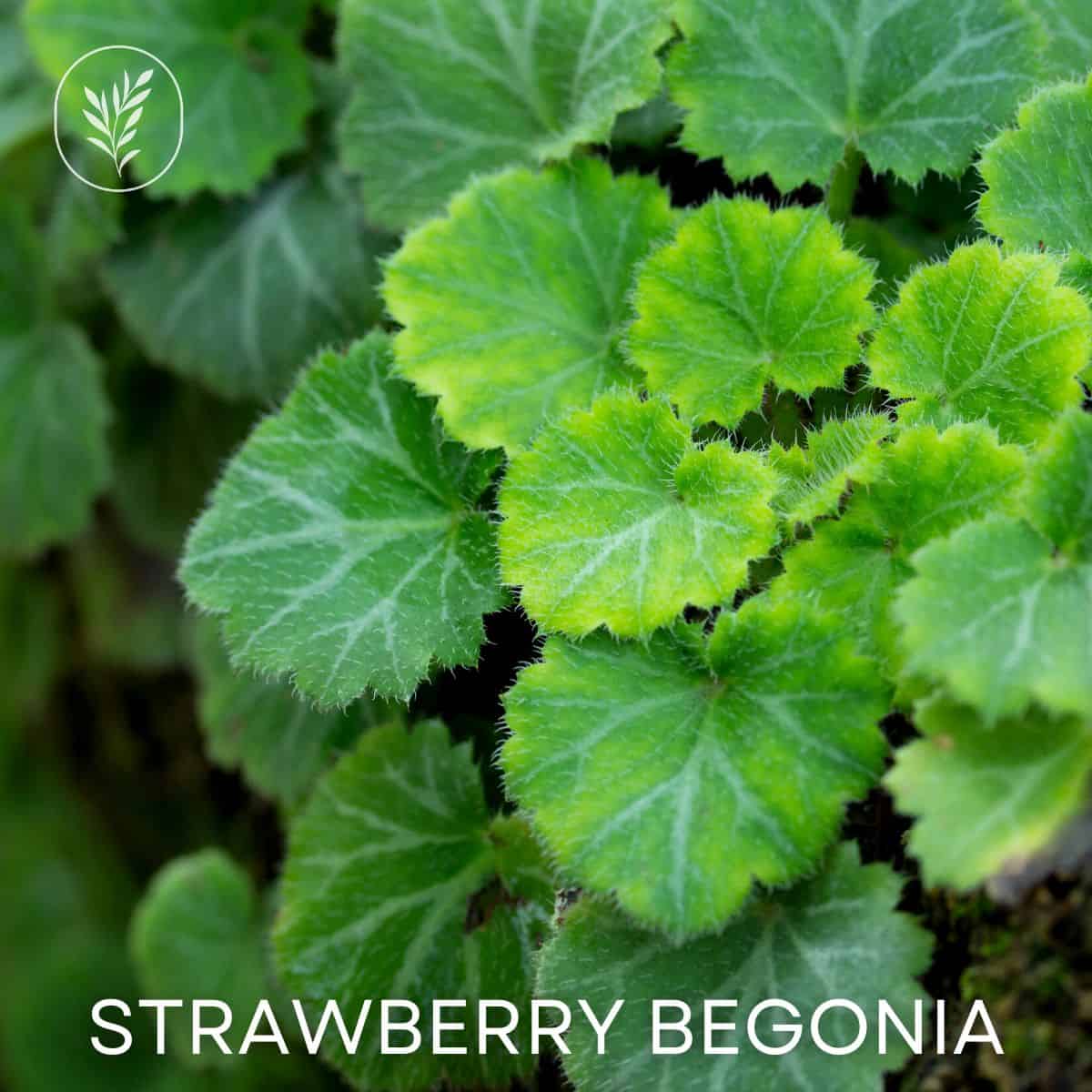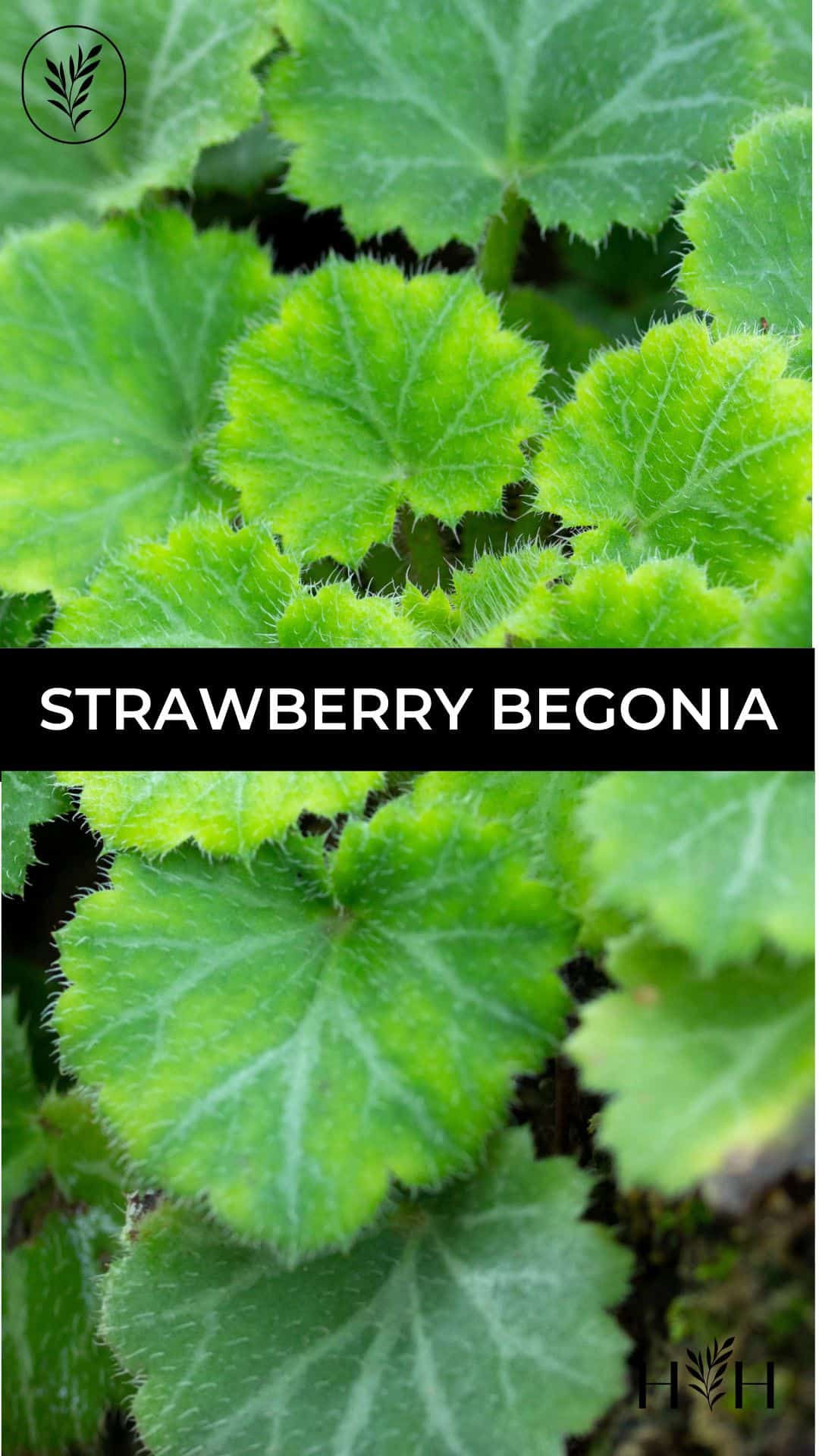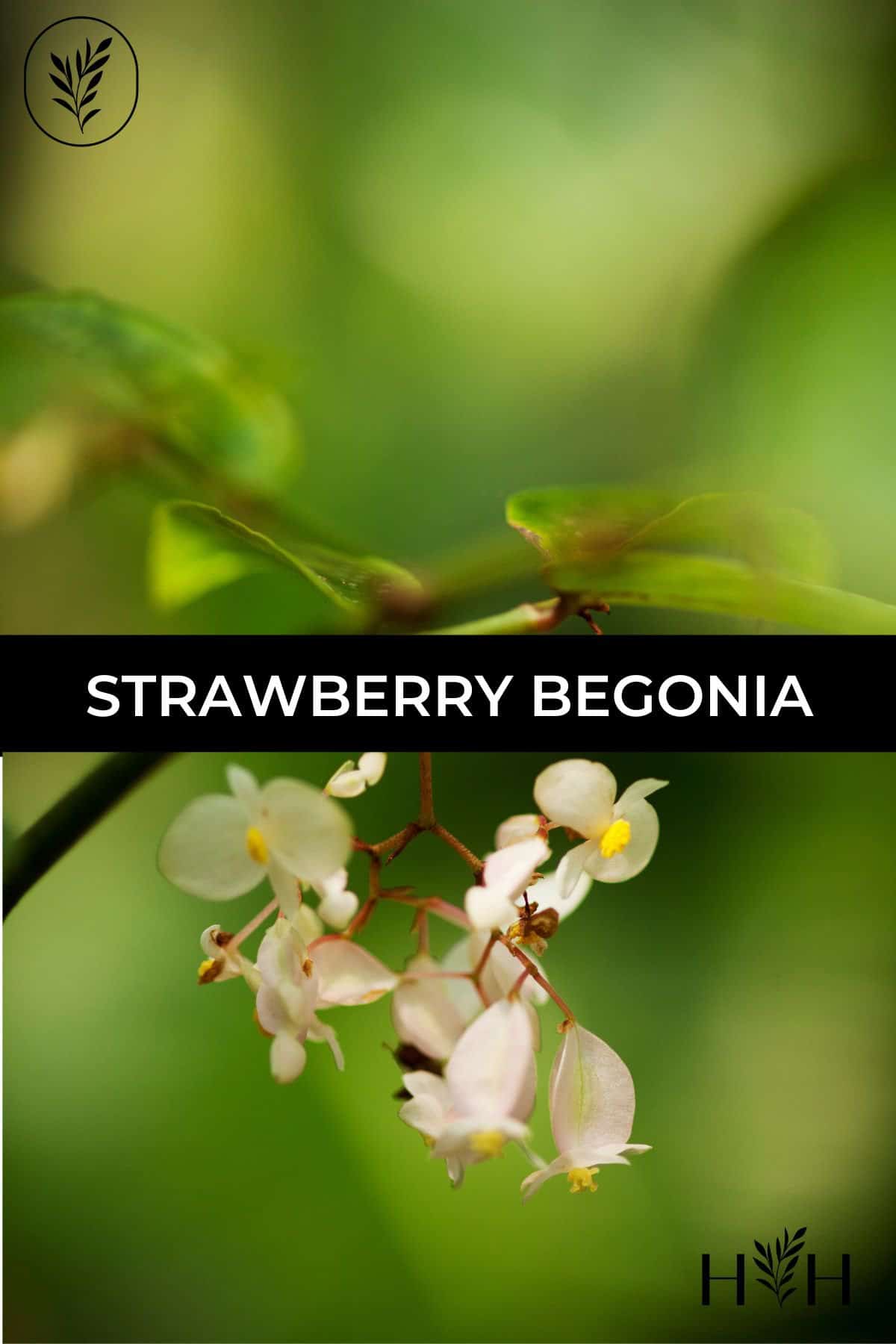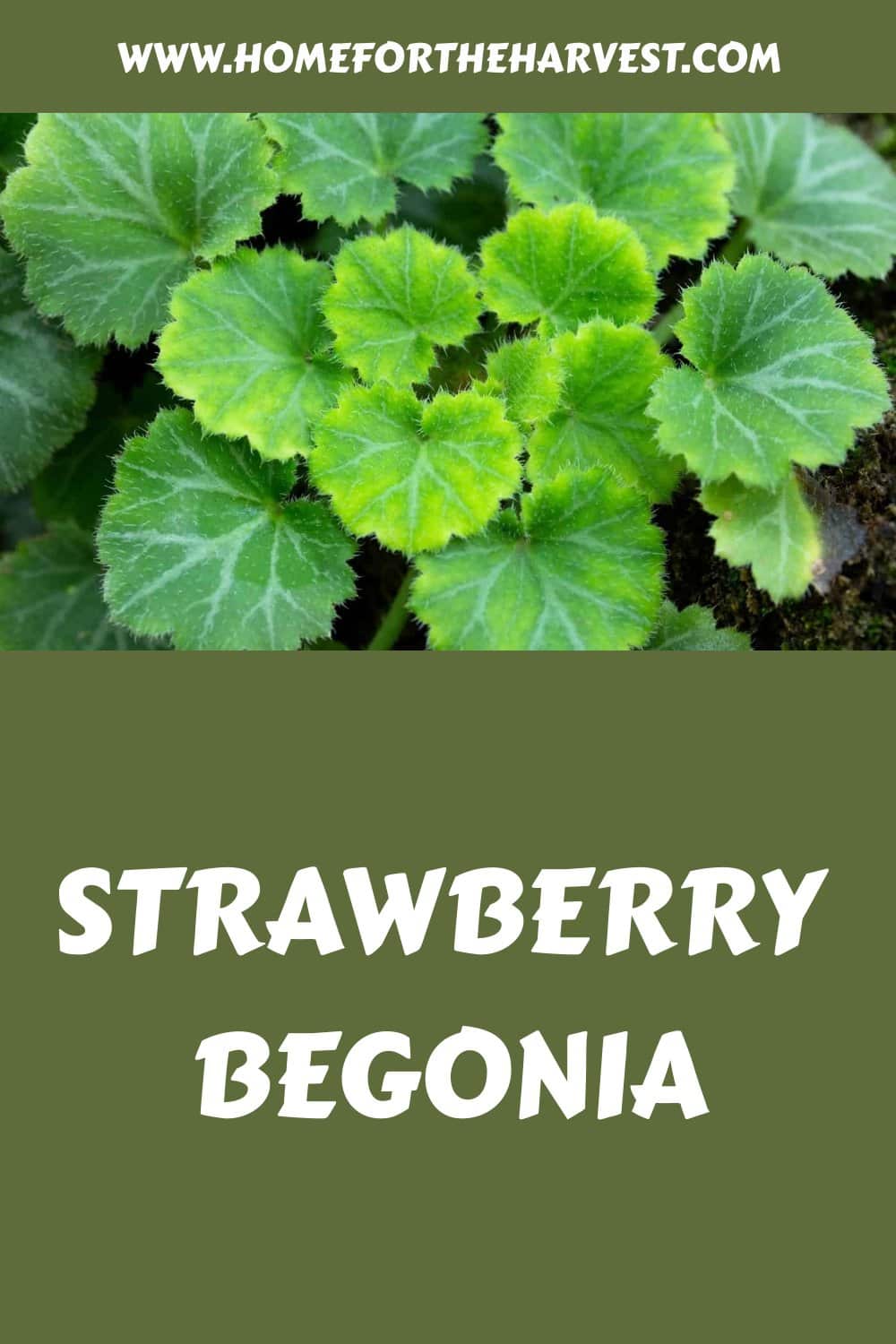Looking for a unique potted plant to add to your plant family? Consider a Strawberry begonia!
The Strawberry begonia (Saxifraga stolonifera) is a flowering herbaceous ornamental plant that is neither a Begonia nor a Strawberry but has a similar appearance. These low-growing groundcover plants are native to China, Korea, and Japan. Most commonly grown as a houseplant, this trailing plant grows best in bright indirect light, nutrient-rich soil, and moderate air humidity.
So, keep reading if you have a Strawberry begonia or want to purchase one. This article will cover the basics of owning and caring for a Strawberry begonia so you can help your plant thrive!
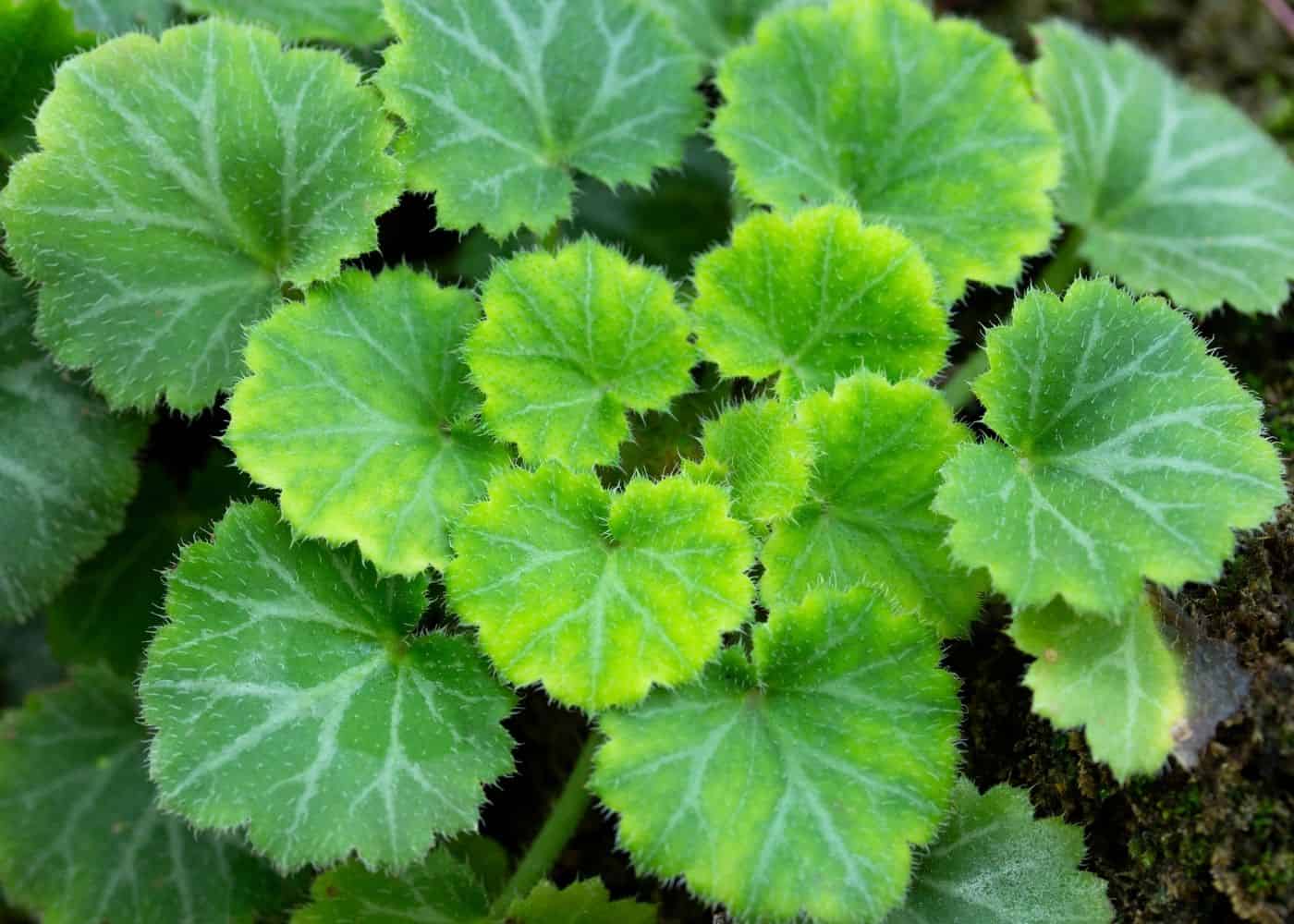
Strawberry begonia basics
Despite its name, Strawberry Begonia (Saxifraga stolonifera) isn’t a true Begonia plant or a true Strawberry plant. Strawberry Begonia is in a completely different plant family than either of its namesake plants. Instead, these flowering herbaceous plants get their name due to their appearance, including fuzzy leaves and runners. These little plants look lovely hanging from planters or sitting in a bright room.
Other names for strawberry begonias
The botanical Latin name is Saxifraga stolonifera. Similarly, other common names for Strawberry Begonia (Saxifraga stolonifera) are Creeping Saxifrage, Strawberry Saxifrage, Mother of Thousands Begonia, and Strawberry Geranium.
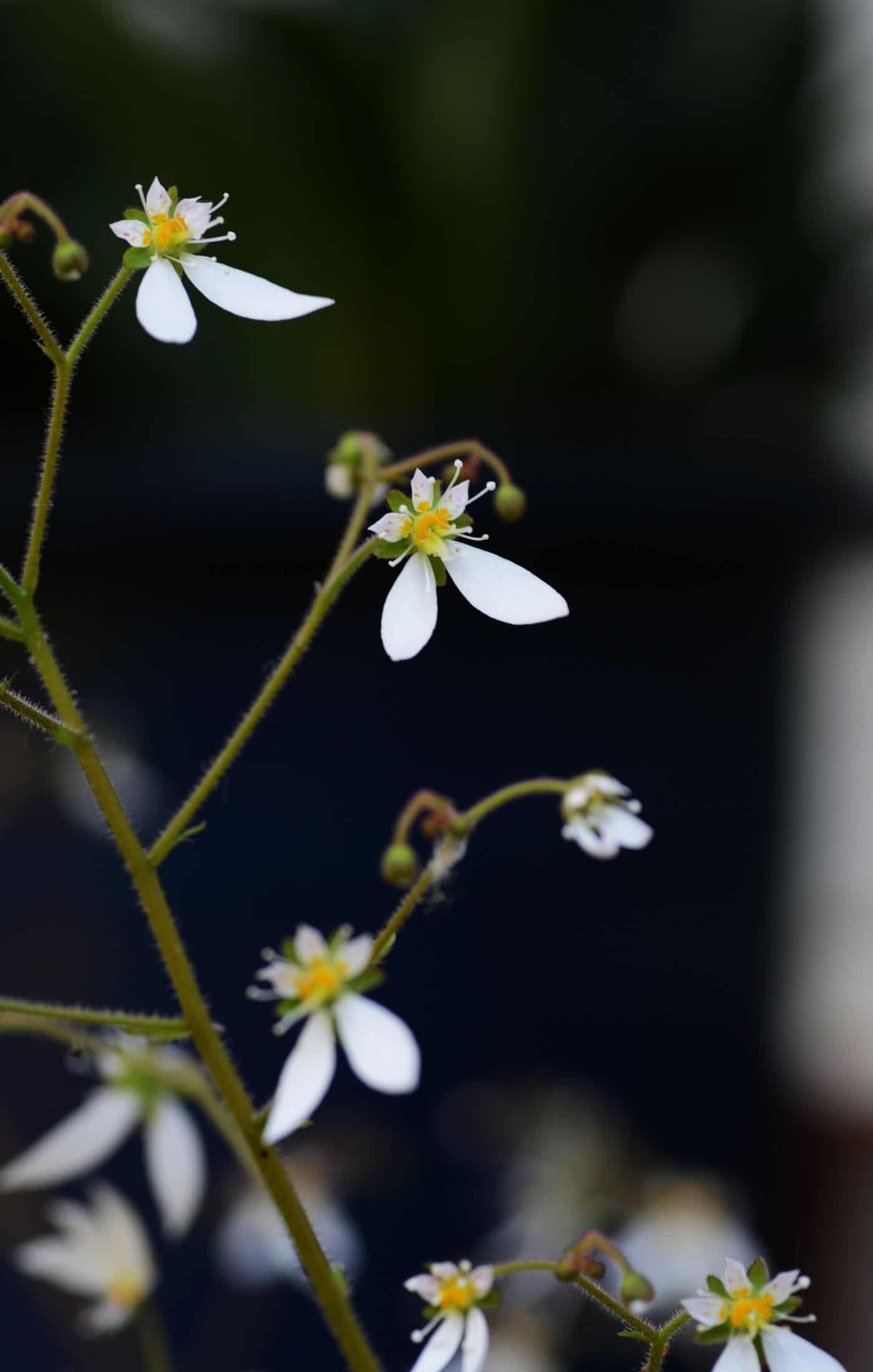
Buying strawberry begonia plants
You can purchase Strawberry Begonias at most garden centers and plant stores during the spring and summer. If you can’t find one locally, look online, as you can often order them for delivery.
Strawberry begonia plant care guide
Strawberry Begonias are extremely easy to care for, making them perfect for beginner gardeners. In addition, the care for Strawberry Begonias is very similar to Swedish Ivy.
Watering strawberry begonia
Since Strawberry Begonias grow rapidly, they need tons of water, especially when they’re actively growing. In addition, it’s best to let the first few inches of soil dry out before thoroughly watering.
You can check your plant’s moisture levels by sticking your finger in the soil. If it feels dry, go ahead and water until you see water pouring out of the drainage holes. If the soil is moist, wait a few more days before watering. In addition, you can water from the bottom by placing your plant in the sink with about an inch of water. The water will wick up into the potting mix slowly. When watering, one thing to keep in mind is avoiding the plant’s leaves, which can lead to fungal disease and wilting leaves.
Light requirements for strawberry begonia
Strawberry Begonias require bright, indirect sunlight. Make sure not to place your plant in direct sunlight as it can burn your plant’s leaves. East and west-facing windows provide adequate light for your plant. If you live in a cooler region, you can also place your plant in a south-facing window. The last option would be to put your plant in a north-facing window only if you live in an area that receives tons of sunlight. On the other hand, not giving your plant enough light can stunt its growth. If planting your Strawberry Begonia outdoors, make sure the plant has some partial shade to prevent the leaves from burning.
Fertilizer for strawberry begonia
You can fertilize your Strawberry Begonia every week during its active growing season. When fertilizing your plant, use a diluted liquid fertilizer containing nutrients to promote healthy blooms. In the winter, you can stop fertilizing and allow the plant to rest. You can also use fertilizer pellets if you aren’t a fan of liquid fertilizer.
Humidity & temperature for strawberry begonia
Strawberry Begonias thrive in normal humidity levels, meaning they don’t require added humidity to thrive. However, if your home is on the drier side, you can use a pebble tray or a humidifier to give your plant adequate moisture. If you’re unsure if your plant needs more humidity, check the leaves. They will be dry and crispy if they aren’t getting enough moisture.
As for temperature, Strawberry Begonias thrive at 50-75 degrees Fahrenheit. These plants prefer cooler temperatures, so make sure to keep your plant in a cool area. If the runners turn brown, it’s likely due to low air humidity or infrequent watering. So, make sure the air isn’t too dry and you adequately water your plant.
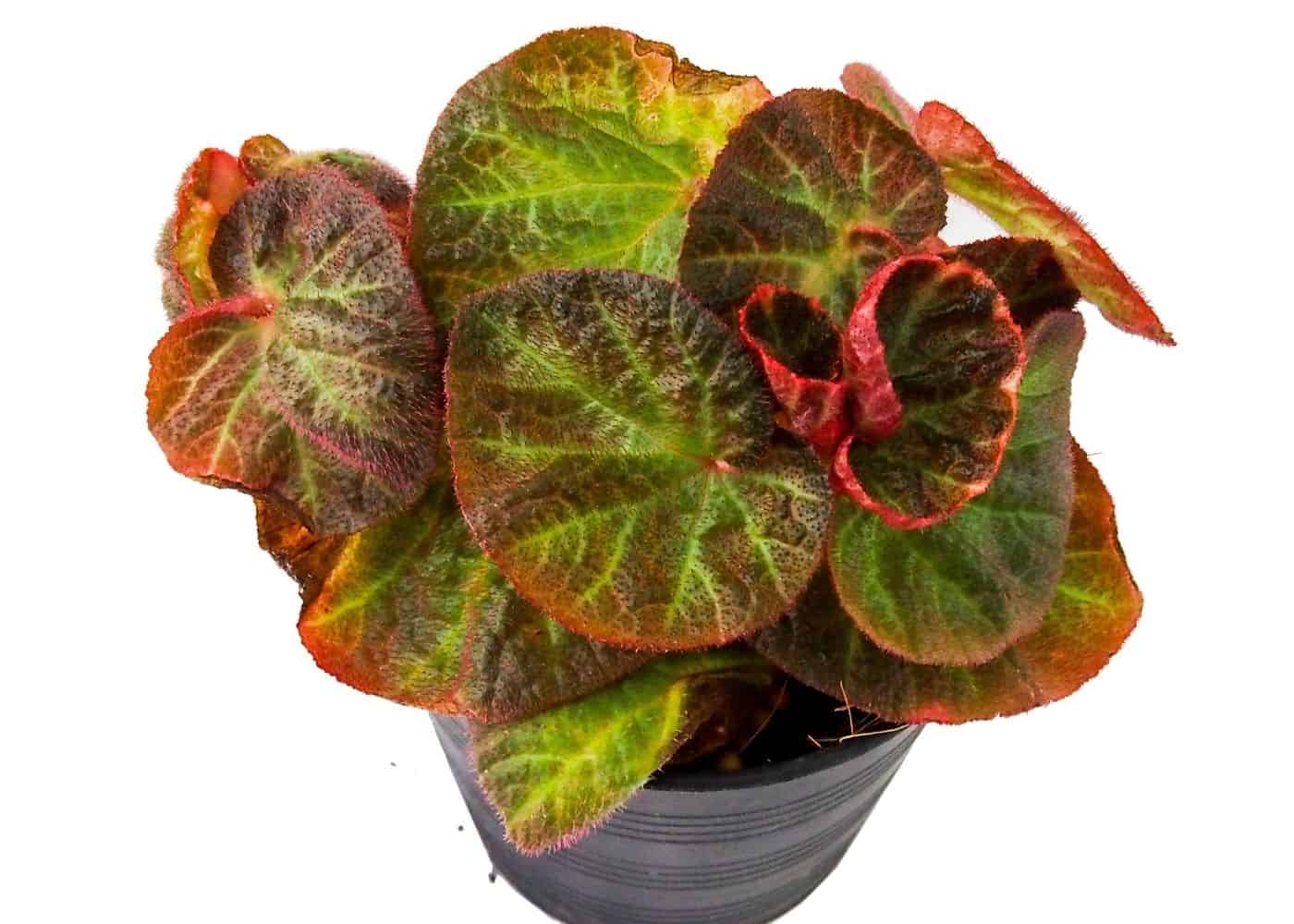
Repotting strawberry begonia
Because Strawberry Begonias grow so quickly, you can repot your plant every year in the spring.
Potting soil for strawberry begonia
A peat moss and perlite mixture works well for Strawberry Begonias. Peat moss maintains adequate moisture levels, whereas perlite breaks up the soil and allows proper drainage. You can also use sand to break up the soil. In addition, Strawberry Begonias prefer neutral to acidic soil. So, if you want to be exact, you can use a pH measure to check the soil’s acidity.
Planter pots for strawberry begonia
Strawberry Begonias do well hanging in pots or on a shelf where their stolons can drape over the edge. You can also use plastic or terracotta clay pots for these plants. When potting Strawberry Begonias, one thing these plants need is adequate drainage. These plants do not like soggy soil and need proper drainage holes. If you decide to go with a plastic pot, they retain water more easily, so avoid overwatering. On the other hand, terracotta pots absorb moisture, making them perfect for Strawberry Begonias.
Propagating strawberry begonia
You can easily propagate Strawberry Begonias with offsets, also known as runners. To propagate your plant:
- Use sharp, sterile scissors and cut off a few healthy offsets from your plant.
- Plant your offsets in moist, high-quality potting soil and water thoroughly.
- To maintain adequate humidity levels, place a plastic bag over the pots.
- Place offsets in an area with bright, indirect light to avoid foliage burn.
- Once your offsets show roots, you can remove the plastic bag and plant each plant in a new pot.
Common pests affecting strawberry begonia houseplants
The most common pests affecting Strawberry Begonias are aphids and whiteflies. These pests attack the plant by sucking the sap from its leaves. In addition, these pests hide underneath the leaves, so they’re hard to see unless you look for them. Another way to tell if you have an infestation is the condition of your plant’s leaves. For example, if the leaves are wilting or sticky, you may have an infestation of aphids or whiteflies.
If your plant already has an infestation of one of these pests, quarantine your plant, so the pests don’t spread to your other plants. Then, use a gentle organic insecticide spray to deal with the pests. Most organic sprays can be reapplied on a regular basis if the infestation is bad.
Common diseases affecting strawberry begonia
The most common disease affecting Strawberry Begonias is root rot. To prevent root rot, avoid overwatering your plant. In addition, you can add more perlite or sand to the soil to promote adequate drainage.


